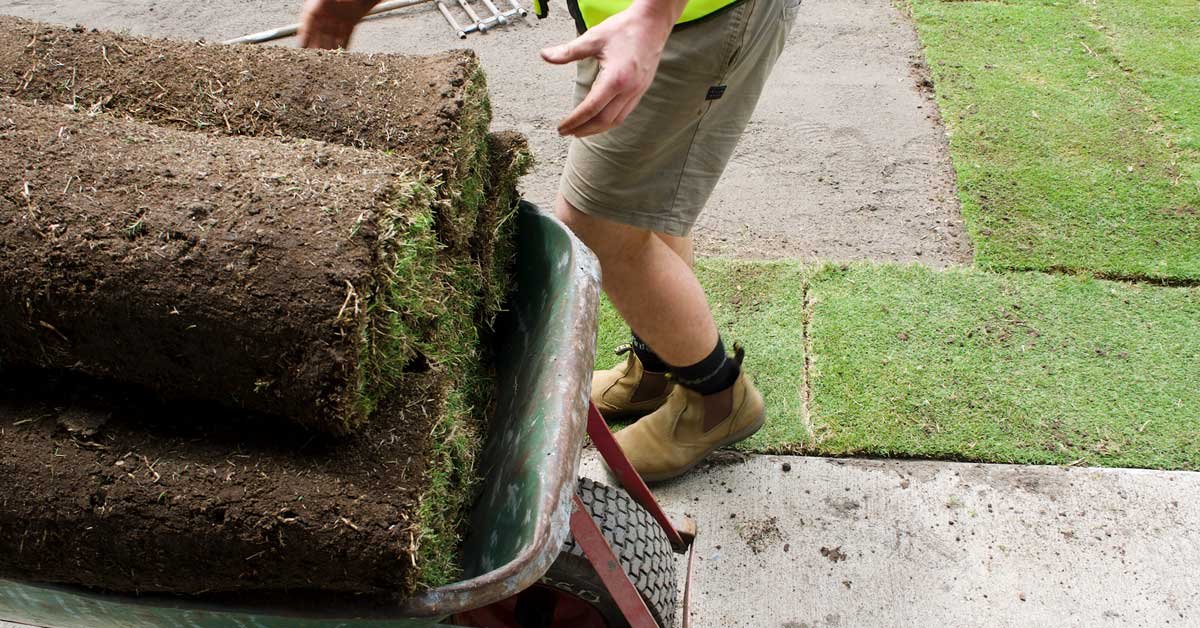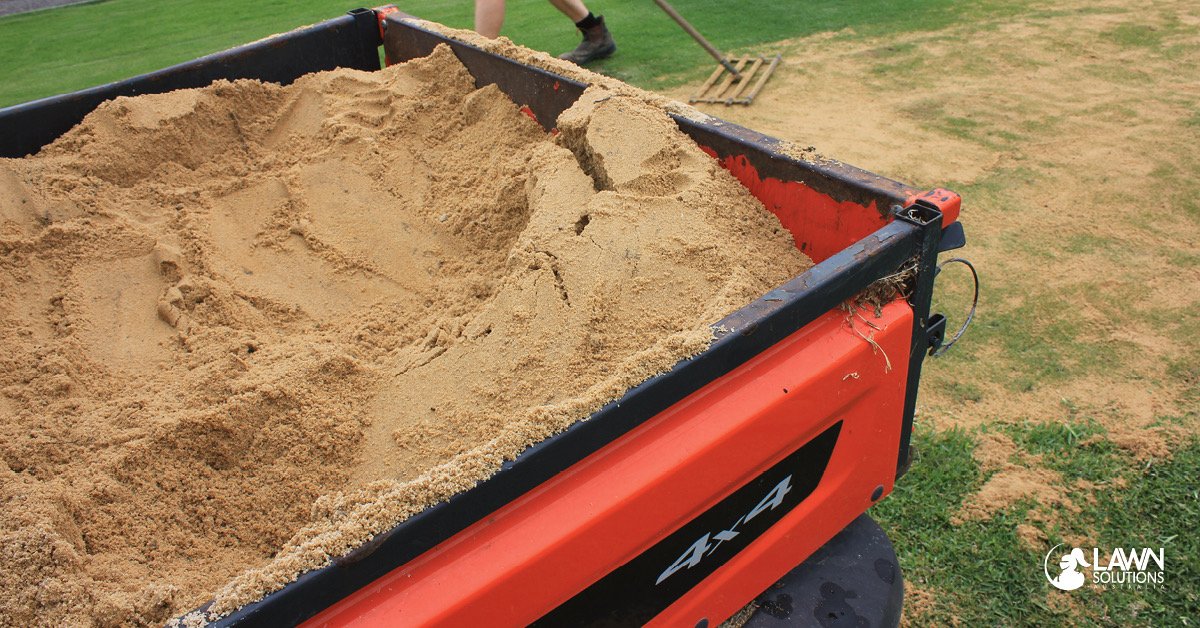LAYING TURF IN WET WEATHER
When laying turf in wet weather, you can take a few extra simple steps to ensure you get the best results.
Ground preparation for turf
When preparing an area for turf we recommend using a non-selective herbicide like Roundup or Zero. When spraying is best to wait for a break in rainfall. This will help ensure that the herbicide won’t wash away, increasing its effectiveness. After your application has taken effect, give the area a low mow. This will help pick up all the dead plant material. This is best done a few weeks before your turf arrives to ensure you have enough time if repeated applications are needed.
Soil for turf
We recommend bringing in at least 100mm of sandy loam (80% sand, 20% loam) when installing grass.
We recommend bringing in your soil a few days before when laying turf in wet weather. This will help avoid the soil washing away. When bringing in soil, avoid it sitting in an area that regularly has water running when it rains, e.g., near a drain. Spreading out soil will be a bit more of a labour-intensive task. It is best to wait in a gap of heavy rainfall and spread the soil out evenly. We recommend using a rake or a lawn leveller to help make the base level. Once the area is level, keep off the area until installing your lawn.
Laying turf
When your turf arrives, it is best to install it as soon as possible. If your soil levels have been disturbed, it is best to use a lawn leveller or rake to even out the soil. Start by laying out your turf in a brickwork pattern at the furthest away from the exit.
Caring for a new lawn
After laying turf in wet weather it is important to avoid walking on the lawn until the lawn is established. This will firstly help keep your lawn level (stopping any footprint divots in the soil base) and will help ensure the grass can establish its roots into the soil base as soon as possible. If the soil base still isn’t level, once the lawn is established you can top dress the lawn to improve levels. Please note it is best to only top dress in spring and summer while the lawn is actively growing.
If your area continues to receive rainfall after instillation, you will need to adjust your watering. For example, if you area is getting lots of rain, you will not need to water. However, if you do have a break in rainfall may need to irrigate the area. As the roots of your lawn grow into the soil base, you can reduce any additional irrigation. For specific advice on irrigation for your current conditions, it is best to have a chat with your local turf supplier.
Due to the wet conditions, weeds have a higher rate of infiltrating your lawn. After establishment, if you notice weeds popping through the lawn it is best to simply remove them by hand. It is best to avoid using herbicides on the lawn until the lawn is established.
When there are periods of excessive rainfall, the nutrients in your soil base in some cases can be washed and drained away. This is known as soil leaching. To remedy this loss of nutrients you can apply a well balanced fertiliser like our Lawn Solutions Premium Fertiliser or Exceed.
Your new lawn should be ready for its first mow once the roots of the grass grow down into the soil profile. To see if it is ready, try to lift the corner of a turf roll from the ground. Your lawn will be ready to mow if you can’t lift the roll from the ground.




